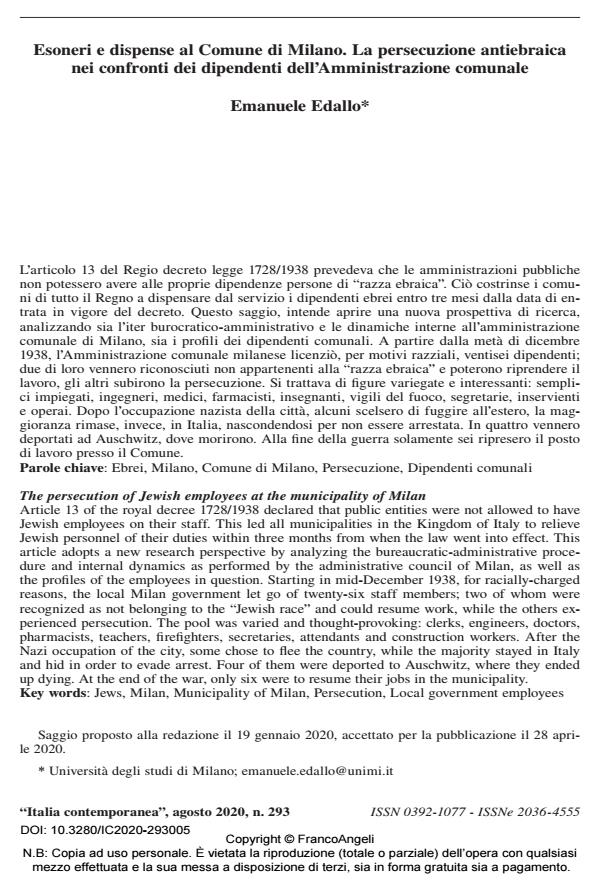The persecution of Jewish employees at the municipality of Milan
Journal title ITALIA CONTEMPORANEA
Author/s Emanuele Edallo
Publishing Year 2020 Issue 2020/293
Language Italian Pages 28 P. 121-148 File size 235 KB
DOI 10.3280/IC2020-293005
DOI is like a bar code for intellectual property: to have more infomation
click here
Below, you can see the article first page
If you want to buy this article in PDF format, you can do it, following the instructions to buy download credits

FrancoAngeli is member of Publishers International Linking Association, Inc (PILA), a not-for-profit association which run the CrossRef service enabling links to and from online scholarly content.
Article 13 of the royal decree 1728/1938 declared that public entities were not allowed to have Jewish employees on their staff. This led all municipalities in the Kingdom of Italy to relieve Jewish personnel of their duties within three months from when the law went into effect. This article adopts a new research perspective by analyzing the bureaucratic-administrative procedure and internal dynamics as performed by the administrative council of Milan, as well as the profiles of the employees in question. Starting in mid-December 1938, for racially-charged reasons, the local Milan government let go of twenty-six staff members; two of whom were recognized as not belonging to the "Jewish race" and could resume work, while the others experienced persecution. The pool was varied and thought-provoking: clerks, engineers, doctors, pharmacists, teachers, firefighters, secretaries, attendants and construction workers. After the Nazi occupation of the city, some chose to flee the country, while the majority stayed in Italy and hid in order to evade arrest. Four of them were deported to Auschwitz, where they ended up dying. At the end of the war, only six were to resume their jobs in the municipality.
Keywords: Jews, Milan, Municipality of Milan, Persecution, Local government employees
Emanuele Edallo, Esoneri e dispense al Comune di Milano. La persecuzione antiebraica nei confronti dei dipendenti dell’Amministrazione comunale in "ITALIA CONTEMPORANEA" 293/2020, pp 121-148, DOI: 10.3280/IC2020-293005